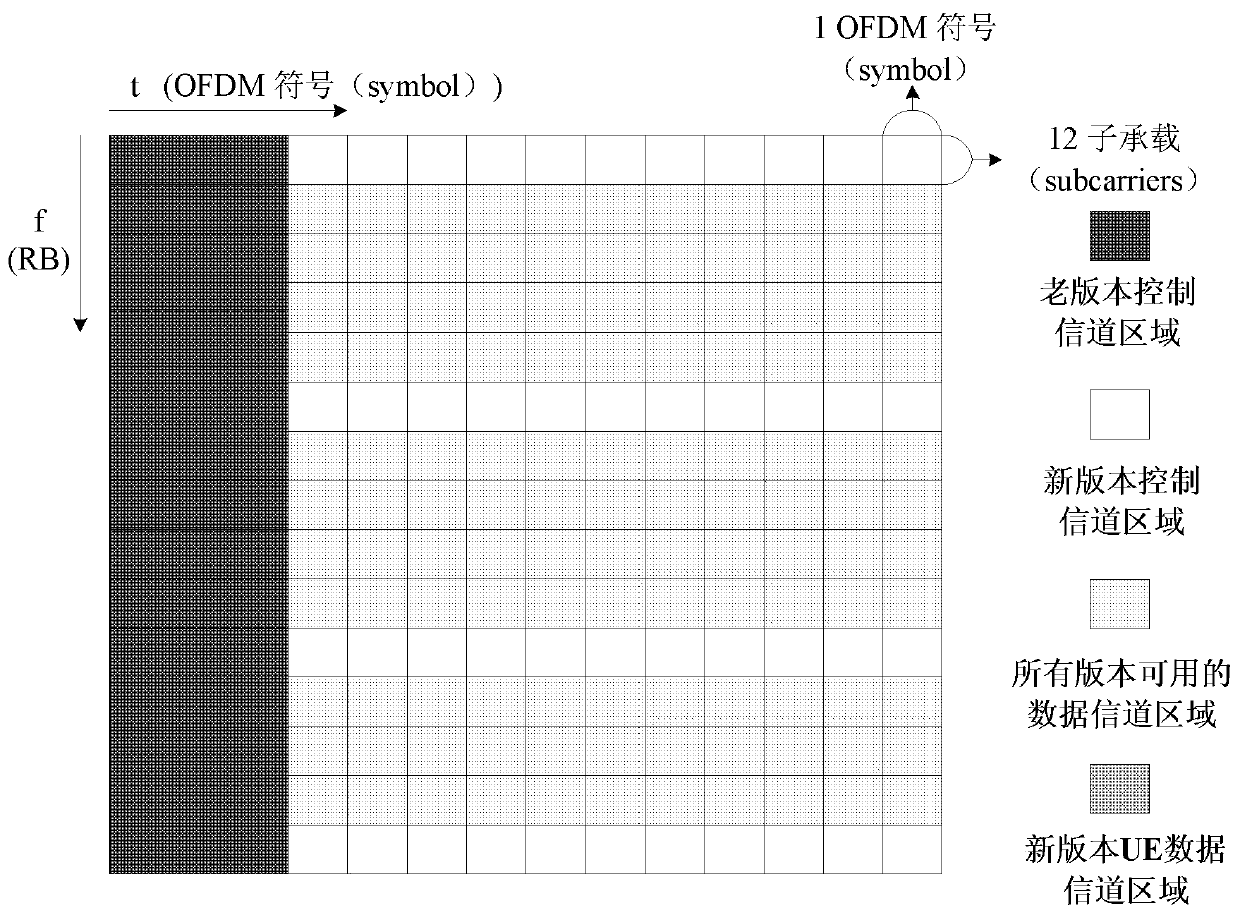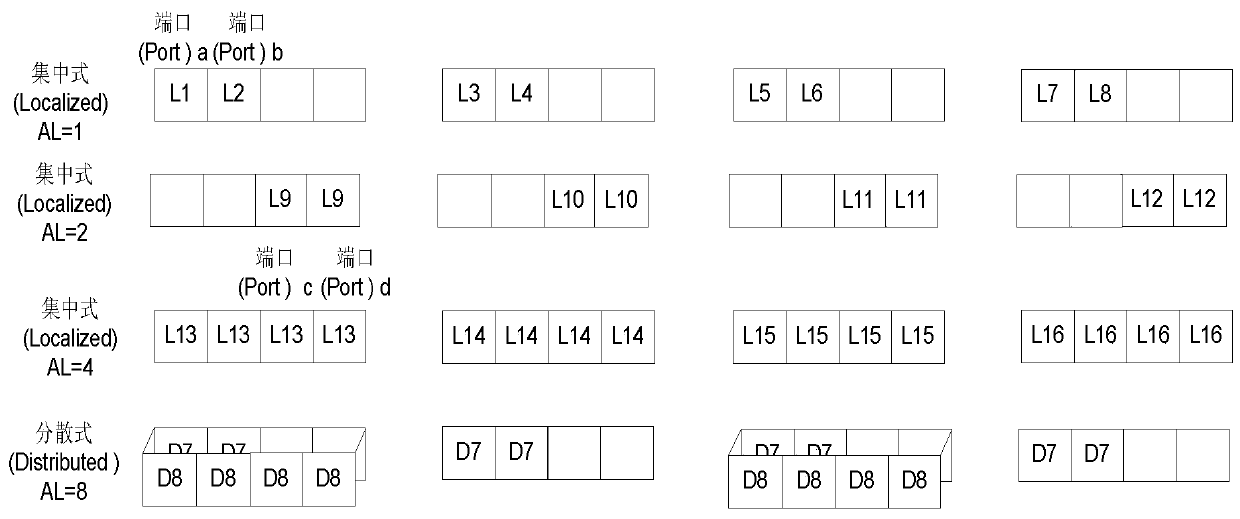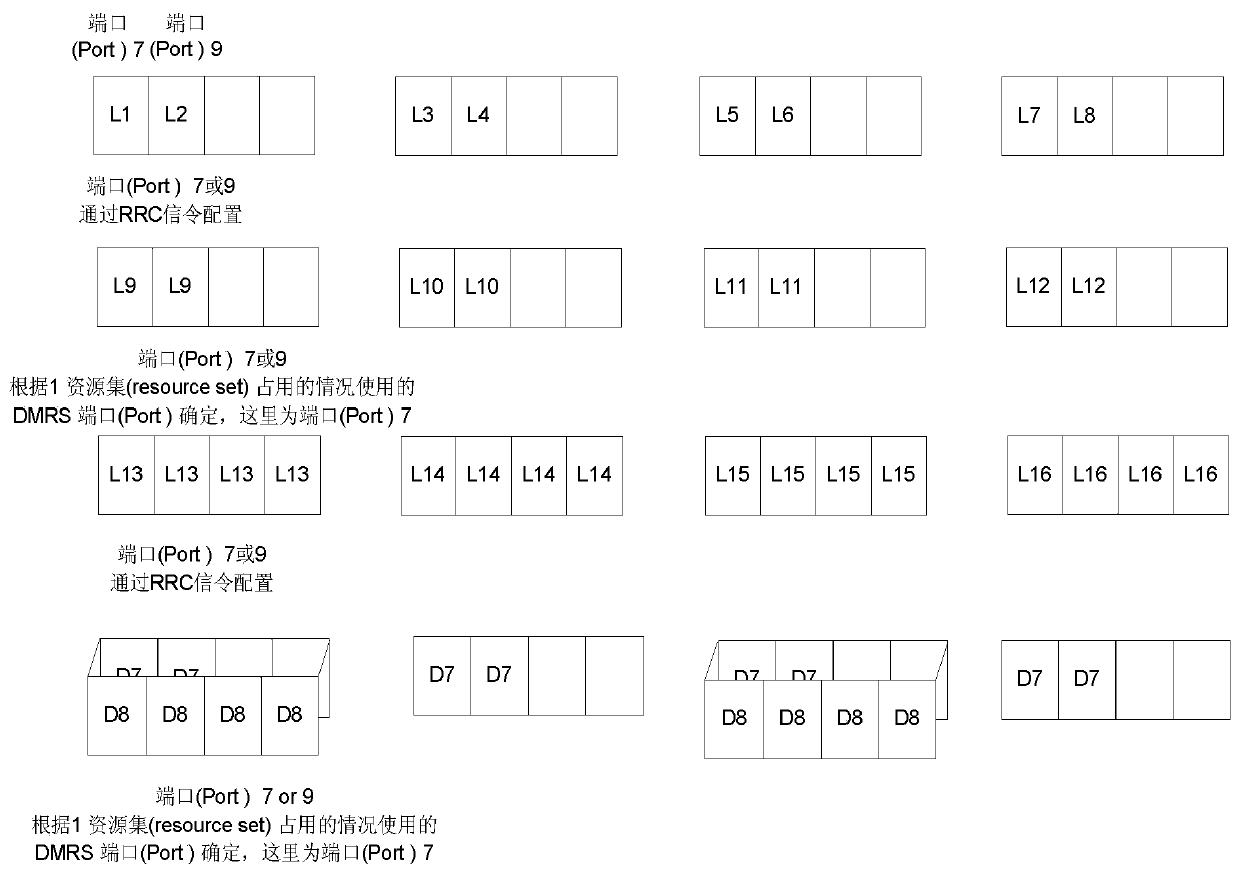Method for sending control signaling, method for detecting control signaling, terminal and base station
A technology for controlling signaling and sending methods, applied in the field of communication, can solve problems such as too many channel estimation times and high terminal complexity, and achieve the effects of reducing channel estimation times, reducing implementation complexity, and reducing detection delay
- Summary
- Abstract
- Description
- Claims
- Application Information
AI Technical Summary
Problems solved by technology
Method used
Image
Examples
Embodiment 1
[0086]The base station sends the control signaling on the downlink transmission resources of the second control signaling area. When the base station sends the downlink control signaling, there are several options for selecting the size of the control signaling detection to perform self-adaptation of the code rate during the transmission of the control signaling. Several different aggregation levels are defined for eCCE-based:
[0087] Aggregation level N(1), aggregation level N(2), aggregation level N(3), aggregation level N(4), where N(1)-N(4) are integers. The common values are 1, 2, 4, 8 respectively. This is not limited to this value, nor is it limited to 4 aggregation levels, and may also be 2, 3 aggregation levels and other situations.
[0088] For the base station and the terminal, the following mapping relationship can be agreed upon:
[0089] If ePDCCH candidates occupy one eCCE in the RB, and the eCCE corresponds to a resourceset, determine the DMRS port corresp...
Embodiment 2
[0108] In the case of embodiment one, it is also possible to pass Figure 4 The configuration shown minimizes the complexity of channel estimation:
[0109] The ePDCCH candidates at aggregation level 1 have 2 candidates in each RB, including Resource set2 and 3 respectively, and the used DMRS ports are a and b, corresponding to 8 and 10 respectively.
[0110] The ePDCCH candidates at aggregation level 2 have a candidate in each RB. The candidate contains the aggregation of Resource set2 and 3 in the RB. The two Resource sets correspond to a DMRS port, because the ePDCCH candidates at aggregation level 1 occupy resources The DMRS port sets corresponding to the set are port8 and 10, and due to the need to meet the existence of the subset relationship, the DMRS port used can only be port8 or port 10; the specific use of port8 or port10 can be determined according to the high-level signaling issued by the base station.
[0111] The ePDCCH candidates under aggregation level 4 have...
Embodiment 3
[0117] In the case of embodiment one, it is also possible to pass Figure 5 The configuration shown minimizes the complexity of channel estimation:
[0118] For ePDCCH candidates at aggregation level 1, there is one candidate in each RB, including Resource set0, and the used DMRS port is a, corresponding to port 7.
[0119] The ePDCCH candidates at aggregation level 2 have a candidate in each RB. The candidate contains the aggregation of Resource set0 and 1 in the RB. The two Resource sets correspond to a DMRS port, because the resources occupied by ePDCCH candidates at aggregation level 1 The DMRS port set corresponding to the set is port7, and the DMRS port used is port7 because of the need to satisfy the existence of the subset relationship.
[0120]The ePDCCH candidates under aggregation level 4 have 1 candidate in each RB, and the candidates contain all 4 Resource sets in the RB, and the 4 Resource sets correspond to a DMRSport. Because the ePDCCH candidates at aggregati...
PUM
 Login to View More
Login to View More Abstract
Description
Claims
Application Information
 Login to View More
Login to View More - R&D
- Intellectual Property
- Life Sciences
- Materials
- Tech Scout
- Unparalleled Data Quality
- Higher Quality Content
- 60% Fewer Hallucinations
Browse by: Latest US Patents, China's latest patents, Technical Efficacy Thesaurus, Application Domain, Technology Topic, Popular Technical Reports.
© 2025 PatSnap. All rights reserved.Legal|Privacy policy|Modern Slavery Act Transparency Statement|Sitemap|About US| Contact US: help@patsnap.com



